Understanding of gender-based dynamics of the South African smartphone market, given the country’s (still) new democracy and associated drive to ensure empowerment of the women folk, is of significance to me as a digital marketing strategist and infopreneur. I share with you my analysis and key findings in this post.
But first, Let me get the boring but important stuff out of the way. South Africa’s population stands at an estimated 50.5 million, and females make up 52% thereof. Now, we can move on to more interesting stuff.
According to OurMobilePlanet, South Africa’s smartphone penetration for males and females is 17% and 14% respectively. I am tempted to wax lyrical about Mzansi‘s gender imbalance history and how it may explain this skew, but I shall leave that to the politicians and stick to my knitting.
Blackberry, the current star of South African smartphone market, owes its dominance to females (Graph 1). Nokia smartphones are a distant second in the male smartphone market, where Android is making discernible market share gains.
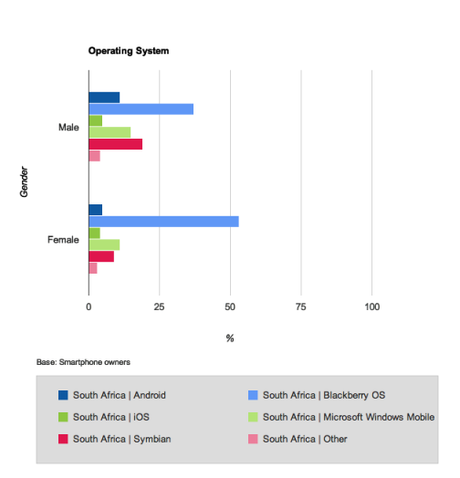
Graph 1
A
More females are first time owners of their smartphones (Graph 2).
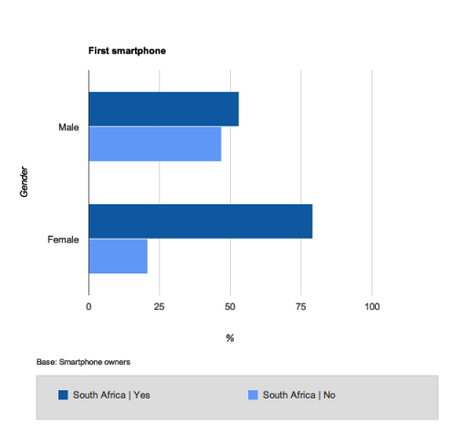
Graph 2
Both genders access the Internet multiple times in a day on their smartphones, which indicates high usage.
Of the known reasons for accessing the Internet on smartphones in Graph 3, gender differences of 5% or more relate to: Costs less than on computer (Female +10%) and No Internet at home (Female +7%)
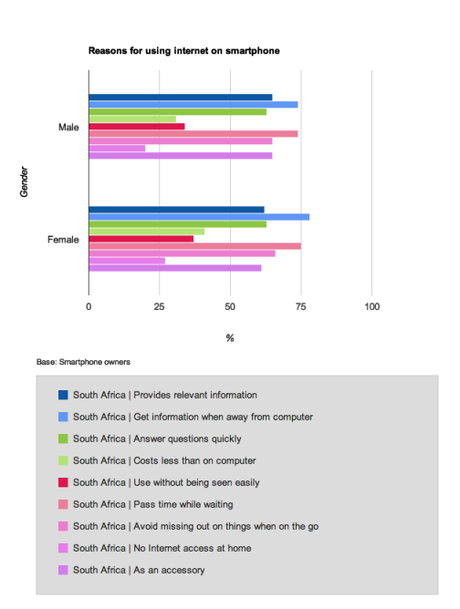
Graph 3
A
Both genders use smartphones in parallel with other media, lead by Listening to music, Using Internet on another device, Watching TV and Watching movies.
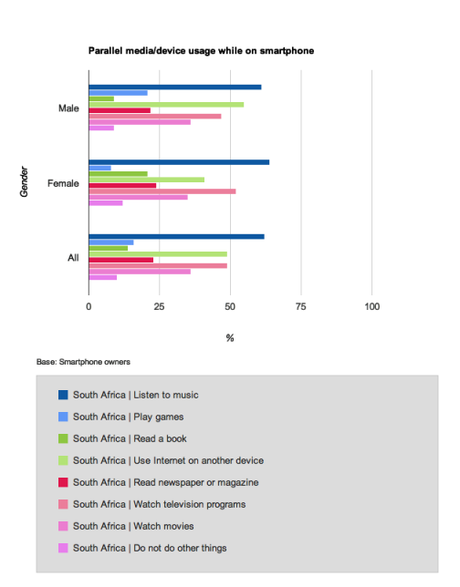
Graph 4
More males use smartphones while being on the Internet with another device (+14%) and playing games (+13%), while more females watch TV while using their smartphones (+5%).
The top 7 general activities for which smartphones are used look similar between the two genders.
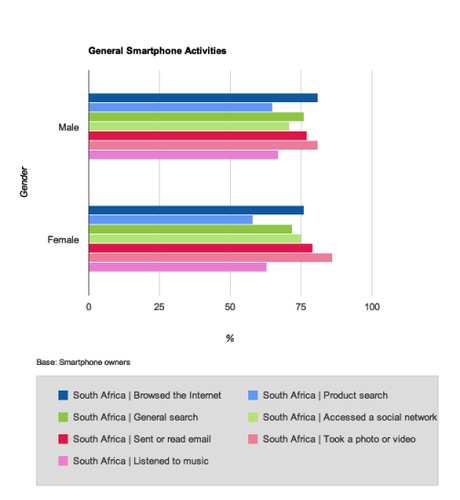
Graph 5
However, there are specific activities that show a gender skew based on a difference of 5% or more, and these are shown in Graph 6.
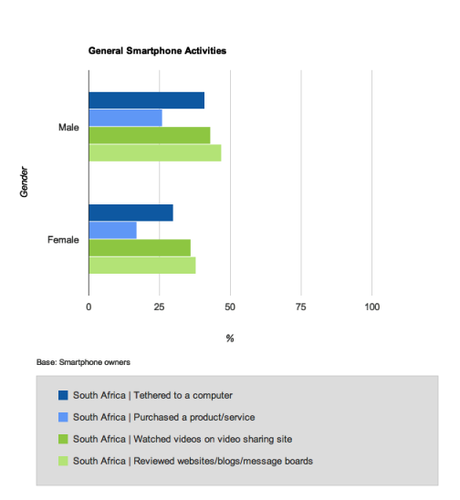
Graph 6
More males used their smartphone to tether to the computer (+11%), purchase a product/service (+9%), watch videos on video sharing site and reviewed websites/blogs/message boards (9%); than females.
Related post: Growth of the South African smartphone market and its impact on m-commerce
It is generally accepted that social media appeal more to females, and this is confirmed by Graph 7 that shows the fairer sex visit social sites more often.
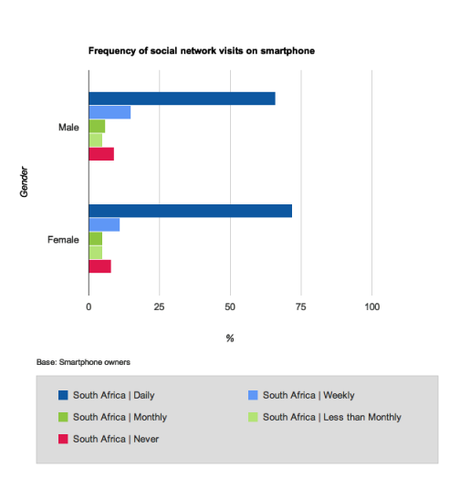
Graph 7
A
What does this all mean? Well, a key insight from the analyzed stats is that males embrace new mobile technologies more readily than females. The following 2 last stats validate this point:
- males have more apps (18) on their smartphones than females (12), and
- more of them (males) are looking to use even more apps in the future, as shown by Graph 8.
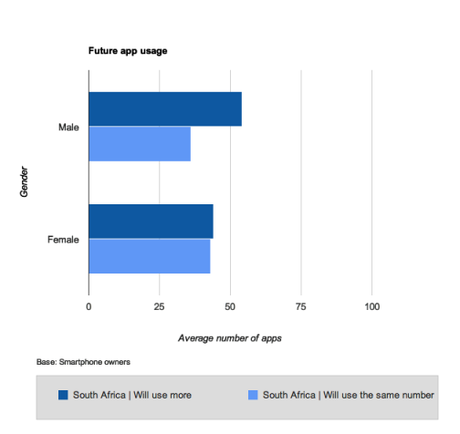
Graph 8
A

